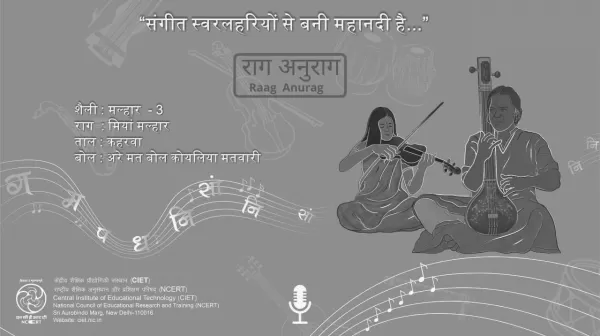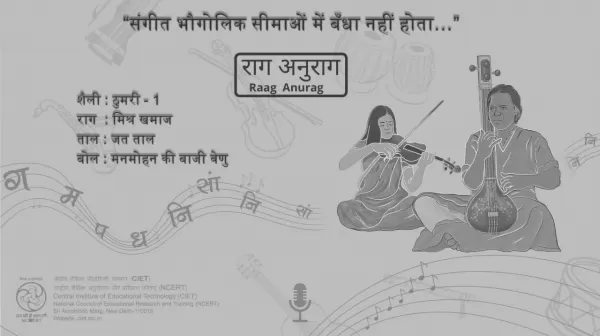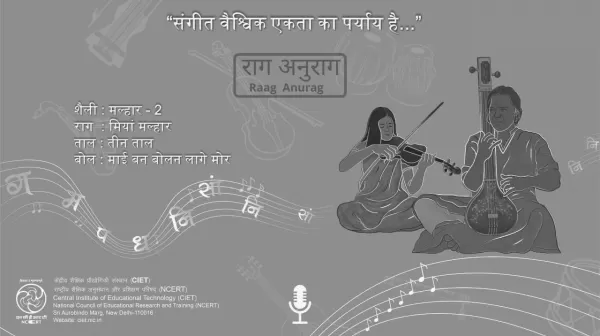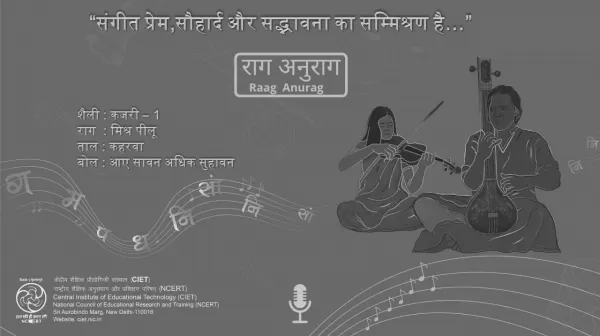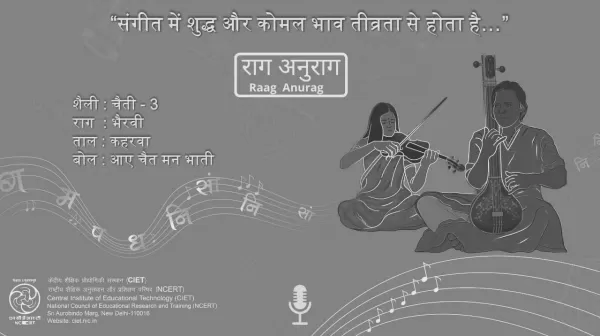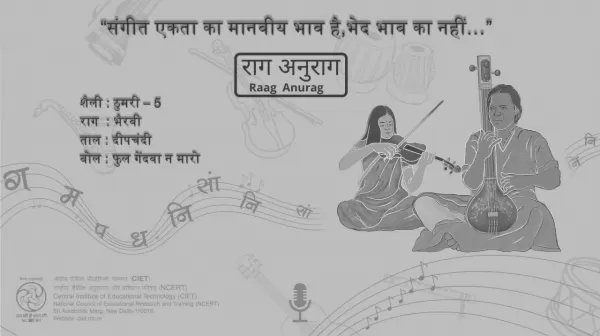Kajri 1 Rag Mishra "Peelu Aae Sawan Adhik Suhavan"
Kajri is semi classical style of music. It is a well-known folk genre evolved eventually from the folk of Uttar Pradesh, one of the Indian states. It is mainly sung during the rainy season which is mid-July to mid-August according to English calendar. Now, let have a brief information about Rag Mishr Peelu in Taal Kaharwa. Rag Peelu derives from Kafi thhat or melody family. Its Wadi swara is Gandhar (Me) and Samwadi swara is Nishad (Ti). In the ascension of this raga Rishabh (Re) and Dhaiwat (La) are forbidden and both Gandhar (Ga), both Dhaiwat (La) and both Nishad (Ti) are used. Remaining all notes are natural. The singing time of this Rag is the 3rd watch of the night. Music is not confined to the geographical boundaries. Indian Ragas can be played not only in Indian musical instruments but in western musical instruments as well. Indian music and ragas are being played globally in all other instruments of many cultures and countries. Indian music is being propagated all over the world and liked so much by different world communities. Moreover, nowadays a revolutionary flavor of music has emerged called “Fusion music” a mix of traditional Indian and western musical instruments. Music is not confined to the geographical boundaries. Indian Ragas can be played not only in Indian musical instruments but in western musical instruments as well. Indian music and ragas are being played globally in all other instruments of many cultures and countries. Indian music is being propagated all over the world and liked so much by different world communities. Moreover, nowadays a revolutionary flavor of music has emerged called “Fusion music” a mix of traditional Indian and western musical instruments. Glossary of Indian-Western Music Sargam- Sa Re Ga Ma Pa Dha Ni (Saptak) Notation - Doh Re Mi Fa Soh La Ti Doh (Octave) {In Hindustani music there are 7 notes shown called Saptak i.e. 7} {In Western music there are 8 notes shown thus called Octave i.e. 8 } Aaroh- Ascension (Lower to higher notes) Avroh- Dissention (Higher to lower notes) Pakad – Insignia/ Recognition/Restricted melody grip Bandish/Rachna- Determined melody structure Shuddh Swara- Natural Note, Tonic Komal Swara - Flat (b)- One semitone lower in frequency Teevra- Sharp (#)- 1 semitone higher in frequency Taal- Beat Shaili- Style/Genre Audav- Pentatonic Scale with 5 pitches or notes per octave Shadav- Hexatonic scale with 6 pitches or notes per octave Sampurna- Septatonic scale with 7 notes or pitches per octave Thhat- Family Wadi is the primary note of any rag whereas usually the 5th note is Samvadi. Chord- Notes - Sa, Ga, Pa, Sa- (Doh, Me, Soh, Doh) All Natural notes=Major. If Ga (Me) is one semitone flat (Komal) it is Minor chord. Example- If any note is to be shown as Komal (flat), it is denoted as the sign of small b If any note is to be shown as Teevra (Sharp ), it is denoted as the sign # The rendering of any Rag may be in Major or in Minor chord regardless of any scale. Major chord means= All notes are natural; Example- Formation of Major chord- Sa, Ga, Pa, Sa {naturel} Minor means=One or more than one notes are either flat or sharp for one semitone. Formation of Minor chord= Sa(Natural). Re (Sharp or Teevra), Ga (Natural), Pa (Natural)
Playlist
Category
- 24 views

